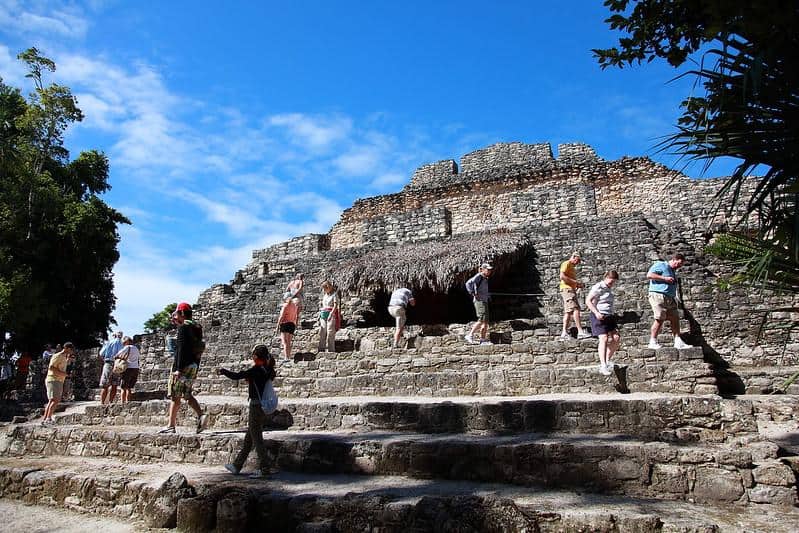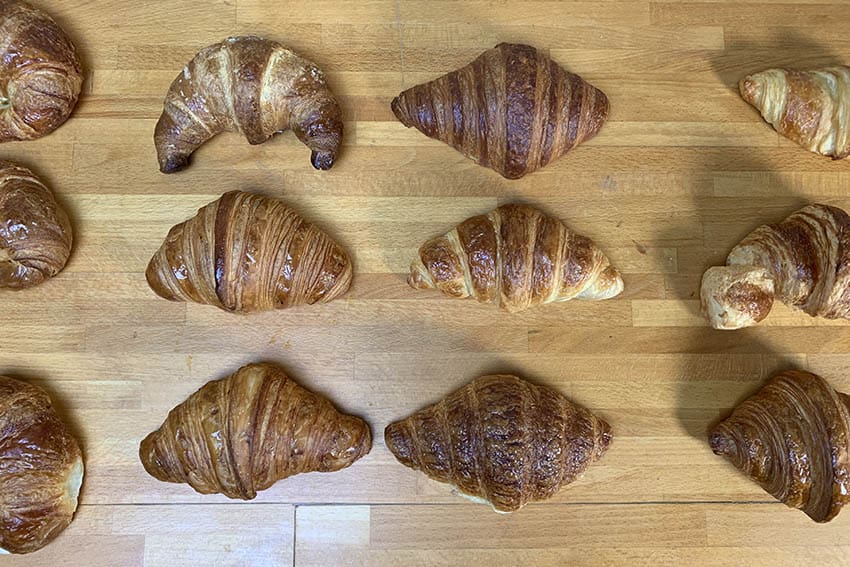By Sarah Wolff
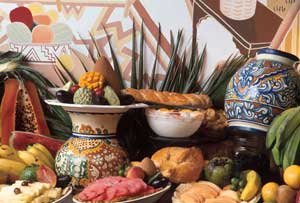
“You like carnitas?” asked Mario-Alberto, my taxi driver.
“Yes,” I lied.
“You like barbacoa?”
“Yes,” I lied again. I only had a vague notion of what those dishes were (Carne means meat, so carnitas must be meaty?)
While Mario-Alberto changed the topic to how to pick up girls in English, I dwelt on my fabrications. I was in Mexico City. Why hadn’t I tried barbacoa and carnitas?
“Señor? Where do you like to eat carnitas and barbacoa?”
“Very good restaurant, Arroyo. In colonia Tlalpan. Is expensive, pero, is good.”
Mario-Alberto writes down the address while driving, making me wonder if I will even live to see Arroyo – or any other restaurant.
Guidebooks offer the same restaurant advice, each stylish boite more cleverly designed than the next. If you are lucky, you might pick something authentic off the list.

But even those restaurants are full of tourists trying to discover the “real Mexico.” So I started asking Mexicans: where do they find true sabor (authentic flavor)?
Arroyo
My hostess Helen and I zoom toward the southern outskirts of the city, passing what looks like a straight-from-Cleveland mall and an unkempt Alcohólicos Anónimos.
But once we turn on to Avenida Insurgentes Sur, the longest road in Central America, things begin to look up.
It’s obvious from the tree-lined streets and smooth roads that the government has poured money into this area. Revelers from a nearby rodeo cram the pyramid of steps to the restaurant, which looks like a Mexican theme park. Six rooms, some of them open-air, can hold 2,000 hungry patrons.
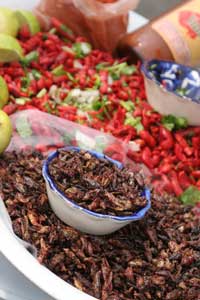
Rainbow-colored papel picado (paper decoration) flags hang from the ceiling, and giant chicharrón (pork skin) fryers dot the tile floor. Roving mariachi bands and caricaturists go from table to table, and small children take over the stage area.
Helen and I are dwarfed by long rectangular tables of 12, 16, 20 people out with their families for some tequila and barbacoa-fueled revelry.
The sopes, thick little tortilla rounds piled with refried beans, cheese, chicken and lettuce, are freakishly good. Arroyo’s barbacoa, (tender roasted meat), is served with stewed cactus, called nopales, and corn tortillas. It has a bit of a wild flavor. The meat falls off the bone.
Virginia Lopez, a manager, comes to speak with us. Spanish deficiencies lead to a surreal moment where Helen, Virginia, and I are all mooing and baaing at one another. For the next two days, we think we’ve eaten goat. Finally, we figure out that the word Virginia used, carnero, means ram – a sheep with all its manhood intact.
El Tizoncito
In the famous open-air market in Coyoacan, I spot a tiny tent filled with handmade jewelry, including leather bracelets and evil-eye protectors. The two women in the booth look as different as night and day, so it surprises me when they say they are sisters.

Eugenia Lopez-Garza has bleached blond braided pigtails a la Pippi Longstocking and wears a pair of red-rimmed glasses that look like a giant version of Sally Jessy Raphael’s specs. Her older sister, Adriana Lopez-Garza, has long flowing dark hair, deep almond eyes, and claw-like nails that clutch a cigarette.
Eugenia says her favorite place to eat nearby is the taquería El Tizoncito.
El Tizoncito is actually a chain, owned by the Escalante family for the past 42 years. Though they have eight taquerias and six franchises, only a few trusted people know the family recipe for the seasonings in their trademark tacos al pastor.
These are made from a giant hunk of seasoned pork, revolving upright around a rotisserie like Greek gyros — except with a chunk of pineapple atop and onion underneath.
The meat is then sliced off along with little bits of onion and pineapple onto corn tortillas, served with cilantro and salsas. El Tinzoncito sells them in pairs, but two aren’t enough.
The open-air restaurant features high, rectangular tables under a canopy, without walls or bulky window frames to obstruct the fabulous people-watching.
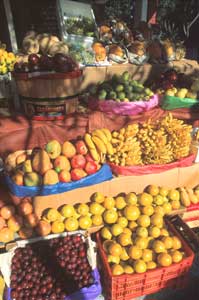
Since it was chilly, Helen and I positioned ourselves next to the revolving pastor. The pastor was really all there was in the way of interior decoration, but its campfire-like qualities and delicious roasted aroma easily made up for the restaurant’s plainness.
El Cardenal
A beautiful sandwich shop manager who looked like the flamenco dancer Joaquin Cortes recommended El Cardenal.
We note the 70s décor: stained glass windows and dark wood spiral staircases against cream-colored walls. Two musicians are serenading the crowd. And there is a crowd.
Though the food is purposefully homey, the service seems the opposite. Staff run around with walkie-talkies and headsets, barking orders. An elevator takes diners upstairs, or to the basement. It all feels a bit Big Brotherish.
Presidential Eats
Maybe that’s why it’s so popular with Mexico’s political elite. El Cardenal is where President Felipe Calderon and his predecessor Vicente Fox like to eat breakfast.
The two broke bread there a few days before the July 2006 presidential election. When the media hordes descended upon him, Fox said all he knew was that he loved the restaurant’s hot chocolate, concha pastries and nata, the creamy layer of fat that rises to the top of whole milk.

El Cardenal’s founders, Doña Oliva Garizurieta and Señor Jesus Briz, married and came to Mexico City in the late 1960s, to revive native Mexican, pre-Spanish cooking.
I tasted other excellent dishes, like huevos revueltos, eggs served with black beans, corn tortillas, and roasted tomato salsa. But the nata and the conchas, shell-shaped pastries that taste like madeleines, are what most patrons (and Mexican presidents, evidently) come for.
Mixed with almond paste and eaten with a spoon, nata tasted like English clotted cream gone bad and looked like baby spit-up. We tried hard to like it, but our gringa taste buds prevented us.
“In Mexico, we have a special relationship with food,” said Tito Briz, son of the owners. “Our restaurant is trying to rescue the cooking of the ancients.”
And so it goes in Mexico City, a land of vivid flavors, bright colors and nata.
Where to Eat Like a Local in Mexico City
Arroyo Restaurante #40003 Avenida Insurgentes Sur, Tlapan, Mexico City. Tel: (55) 73-43-44. Open 8 a.m. to 8 p.m., seven days.
El Tizoncito #3 Aguayo, Coyoacan and #122 Calle Tamaulipas at the corner of Calle Campeche, La Condesa, Mexico City, one of 14 locations. Tel: (55) 52-86 -78-19. Open 24/7.
El Cardenal #23 Calle de Palma, near Avenida Cinco de Mayo. Two other locations: #70 Avenida Benito Juarez, in the Sheraton Centro Historico Hotel, and #215 Avenida de Las Palmas, in the Las Lomas de Chapultepec district. Sunday- Thursday, 8 a.m. to 8 p.m.; Friday and Saturday, 8 a.m. to 11 p.m. Tel: (55) 21-88-15-17. elcardenal.com.mx.
[editor’s note: This story first appeared on NYU LiveWire, an on-line publication of the New York University School of Journalism.]
 Sarah Wolff, a former fashion editor for national and international women’s magazines, is a New York freelance writer specializing in food and travel.
Sarah Wolff, a former fashion editor for national and international women’s magazines, is a New York freelance writer specializing in food and travel.
- Saudi Arabia Might Be Your Next Getaway Spot - April 23, 2024
- Mongolia, the Land of Eternal Blue Sky - April 20, 2024
- These 9 U.S. National Parks Require Reservations in 2024 - April 17, 2024


